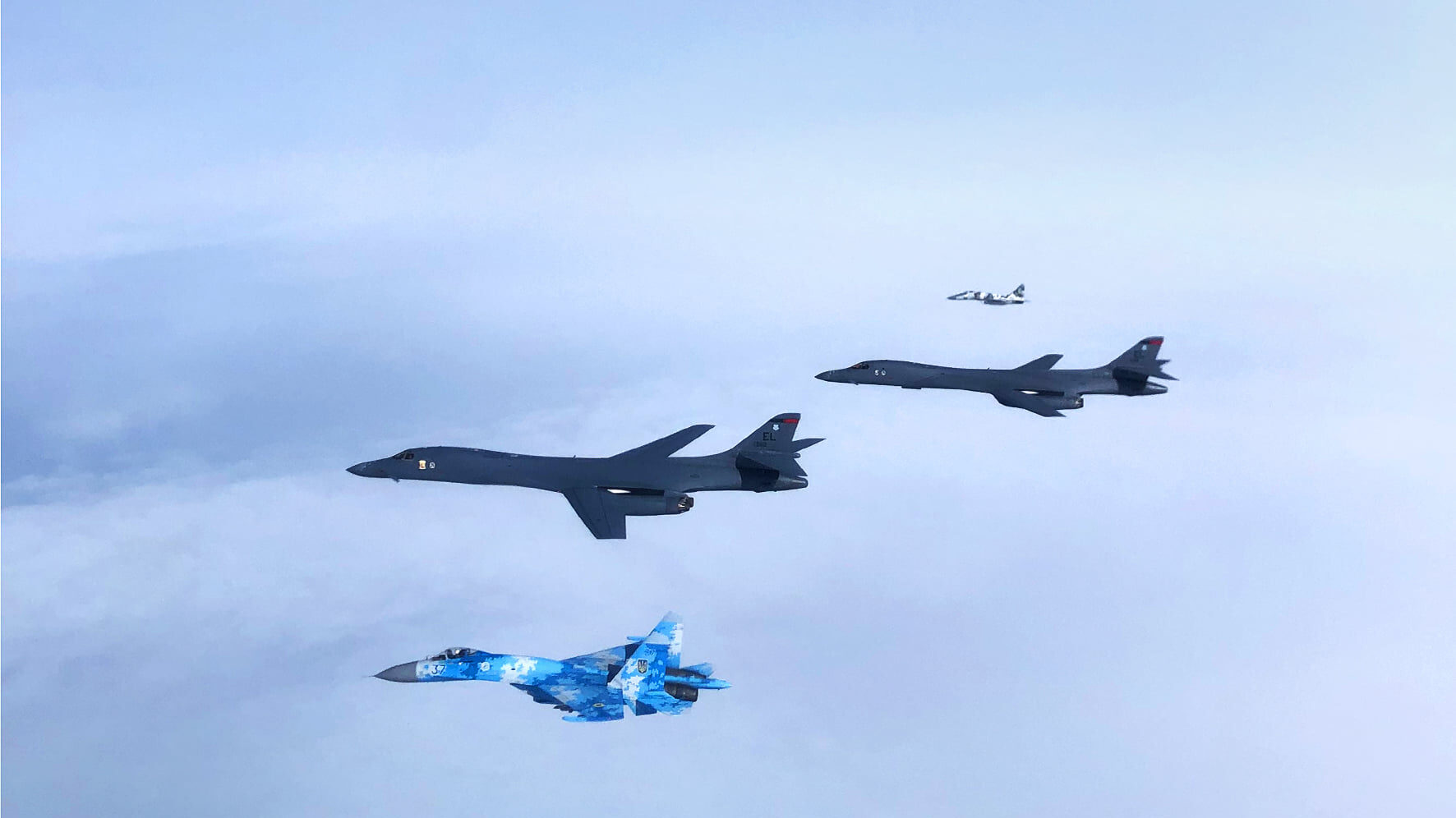
The Ukrainian Air Force has maintained a high operational tempo since Russia’s February 2022 invasion. (Ukrainian Air Force Command)
BELFAST – Europe’s worst security crisis since the Second World War, prompted by Russia’s illegal invasion of Ukraine, stands unfortunately as the only logical starting point to open up a look back at the European defense landscape in 2022.
As the conflict continues to rage, 10 months on, it is difficult not to think of the scale of devastation that has seen major Ukrainian cities destroyed by indiscriminate Russian bombing campaigns.
To put matters in perspective, think of Gen. Mark Milley, Chairman of the Joint Chiefs, estimating that 40,000 Ukrainian civilians and 200,000 personnel from Ukrainian and Russian armed forces have “probably” been killed in the war, as of November.
[This article is one of many in a series in which Breaking Defense reporters look back on the most significant (and entertaining) news stories of 2022 and look forward to what 2023 may hold.]
The reaction from European governments and NATO countries to support Ukraine by urgently supplying weapons and increasing defense budgets has to be considered a watershed moment in international relations, marking a display of transatlantic unity few thought possible.
Singling out one nation for praise seems trite in the circumstances, given the international outpouring of support, but from a European security point of view, after decades of miserly defense spending and being viewed within NATO circles as a liability, Germany’s €100 billion ($101 billion USD) special arms fund announcement, a matter of days after the war, must be given the credit it so rightly deserves.
That means Germany will acquire best in class aircraft like Lockheed Martin’s F-35A fighter jet and potentially become the force within NATO its economic stature so obviously demands. Gone too is long held resistance to weapons exports, with Berlin transferring a variety of equipment to the Ukrainian cause.
The decision by Sweden and Finland to join NATO might also be written in history books as a fearless one, in the context of Russian President Vladimir Putin seeing alliance expansion as a primary motivation to start the war, much less escalate it.
While NATO entry brings with it new strategic security assurances, uncertainty continues to hang over more immediate defense industrial base matters and most pressingly the ability of European governments to replenish munition stockpiles in an expedited manner.
This is not unique of course to Europe, with the Pentagon faced with the same problem, but with civilian lives in Ukraine ultimately depending on those stockpiles increasing, production contracts and procurement approvals should, ethically, not be allowed to proceed at a peacetime pace.
Let me not end on that worrying note, for there have been signs of progress, in relative terms, that the fortunes of Ukraine are changing for the better.
The scenes of joy as residents welcomed Ukrainian forces into the streets of Kherson, upon reclaiming the port city, proved that defiance and resistance are working. Recent reports of Ukrainian drones striking Russian territory, including the Engels-2 airbase that hosts Tu-95 long range bombers, are also being written of as evidence that preemptive strikes are an additional option for Ukraine to counter Russia’s cruise missile threat.
Additionally, Moscow’s over reliance on Iranian drones is being judged as a sign of desperation, linked to a low level cruise missile arsenal.
All told, Ukraine’s most remarkable achievement surely has to be staying in a fight against a would-be superpower that was widely expected to invade and conquer by leveraging an equipment advantage so vast as to induce fear in peer military rivals, the US included.
For now, it is difficult to imagine a ceasefire taking place or a peace agreement being brokered, but those must be priorities in 2023 if Europe is to move away from a nuclear precipice and return to democratic norms.






















